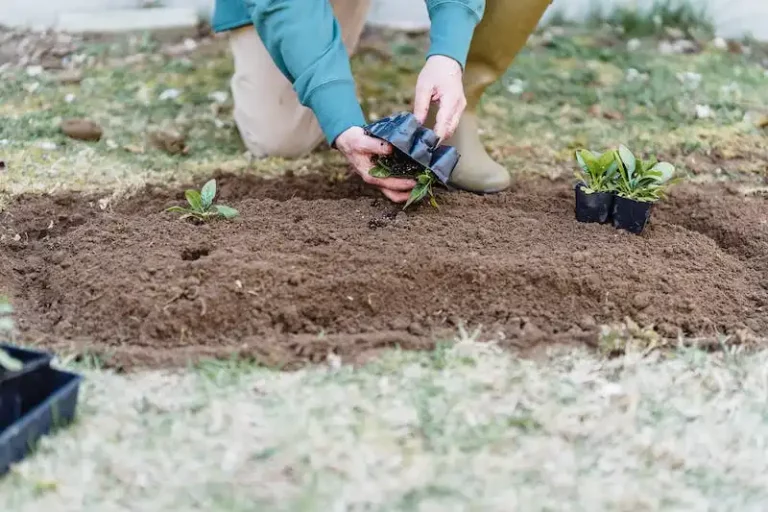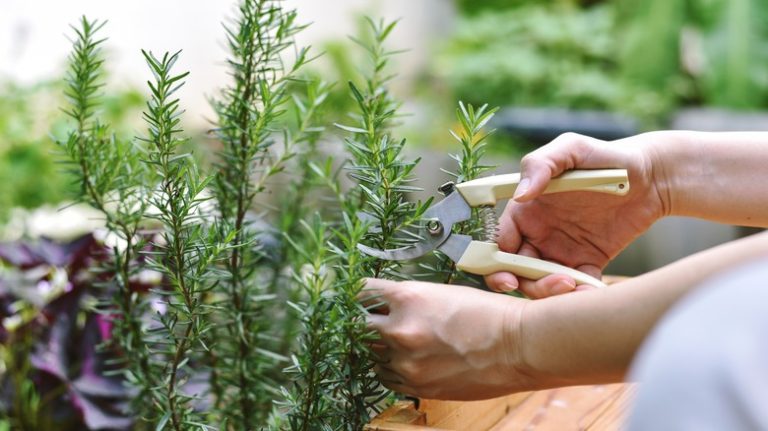Chaste tree, or Vitex agnus-castus, is a stunning flowering plant native to Europe. Known for its beautiful spires of purple-lavender blossoms, this tree can bring a splash of color to any garden. The chaste tree is usually grown as a small tree, with a spread and height of about 10 to 15 feet (3-4.5 m). It has palmately compound leaves with 5-7 leaflets and attractive puffball-like fruits.
The chaste tree is a hardy plant that can tolerate a wide range of conditions. It prefers full sunlight and well-draining soil, but it can also withstand some shade and drought. It can be grown in containers or in the ground, and it is usually only necessary to water it during dry periods. Chaste trees are fairly low-maintenance and don’t require much care, making them a popular choice among gardeners.
One important aspect of chaste tree cultivation is pruning. Pruning is usually done in late winter or early spring to remove any damaged or dead branches and to maintain the desired shape of the tree. It is also important to prune to increase air circulation and prevent fungal diseases. Chaste trees can be pruned heavily, as they are vigorous growers, but excessive pruning can delay or reduce flowering.
Chaste trees are also valued for the medicinal properties of their oils. The essential oil extracted from the chaste tree has been used for centuries to treat a variety of ailments, including hormonal imbalances and menstrual problems. The tree’s dried leaves and fruits are sometimes used in herbal teas and other natural remedies.
In conclusion, chaste tree cultivation and care is relatively easy, making it an excellent choice for both novice and experienced gardeners. With its showy blossoms and attractive foliage, this tree can add beauty and value to any landscape. Whether grown as a small tree or in containers, the chaste tree will surely impress with its stunning violet-blue spires and lilac-like fragrance.
How to Grow and Care for Chaste Tree Vitex
The Chaste Tree, also known as Vitex or Agnus-castus, is a popular and reliable plant for gardeners. It is valued for its beautiful gray-green leaves and spires of pink, purple, or white flowers that bloom from summer into fall.
Growing Chaste Tree Vitex is relatively easy, as it is a hardy plant that can tolerate a wide range of conditions. It thrives in full sun or partial shade and prefers moist, well-draining soils. However, it can also tolerate drier soils and some drought once established. It is important to avoid over-watering to prevent root rot and fungal diseases.
Chaste Tree Vitex requires regular watering during dry periods, especially in the first year after planting. Water deeply, allowing the soil to dry out between waterings. In hotter climates, watering in the morning is recommended to avoid excessive moisture on the leaves, which can lead to fungal diseases.
Pruning is usually not necessary for Chaste Tree Vitex, except for shaping or removing dead or damaged branches. It can be pruned in late winter or early spring before new growth begins. If desired, cuttings can be taken for propagation by rooting in moist soil or water.
Chaste Tree Vitex is relatively deer resistant, but it may sometimes attract bears to the garden. To keep the plant healthy and promote flowering, regular fertilization is recommended. Apply a balanced slow-release fertilizer in early spring and again in midsummer.
Mulching around the base of the plant with organic matter can help retain moisture and suppress weeds. It also adds nutrients to the soil as it breaks down. A 2-3 inch layer of mulch is typically sufficient.
In colder climates, Chaste Tree Vitex may die back to the ground in winter, but it usually regrows in the spring. To protect it from cold damage, you can apply a layer of mulch around the base of the plant before winter.
Chaste Tree Vitex is a valuable plant for many reasons. It is not only a beautiful addition to the garden but also attracts songbirds with its flowers and seed heads. It is also used in traditional medicine for its reputed hormonal effects.
In summary, growing and caring for Chaste Tree Vitex is relatively easy and low maintenance. With the right conditions and proper care, it will reward gardeners with its reliable and trustworthy performance.
Chaste Tree Care
Growing chaste trees (Vitex agnus-castus) is relatively easy due to their adaptability to various soil types and temperature conditions. These beautiful trees are also known as monk’s pepper or chaste berry trees. They are native to the Mediterranean region and have been cultivated since medieval times. Chaste trees are valued for their attractive foliage, fragrant flowers, and medicinal uses.
Chaste trees grow best in full sunlight and well-drained soil. They can tolerate a wide range of soil conditions, including rocky and sandy soils. However, they prefer fertile soil that is rich in organic matter. Prior to planting, it is recommended to loosen the soil and incorporate compost or well-rotted manure to improve its fertility and drainage.
Water the chaste tree regularly during its first few years of growth to help establish a strong root system. Once established, these trees are quite drought-tolerant and can withstand dry conditions. However, they will benefit from occasional deep waterings during periods of prolonged drought.
Chaste trees are known for their beautiful purple-lavender, pink, or white blooms. The flowers appear in late spring or early summer and are arranged in a dense spike-like cluster known as an inflorescence. These fragrant blooms attract bees, butterflies, and songbirds to the garden.
Pruning chaste trees is an important step in their care. It is best to prune them in late winter or early spring before new growth begins. This process helps remove dead or damaged wood, improve the tree’s shape and density, and promotes better flowering. Use sharp and clean pruning tools to make smooth cuts and prevent the spread of fungal diseases.
Chaste trees are generally problem-free, but they can occasionally be affected by fungal diseases, including leaf spot and root rot. To prevent these issues, it is important to provide good air circulation around the tree and avoid overwatering. Applying a balanced fertilizer in early spring can also promote healthy growth.
The chaste tree is a relatively fast-growing tree, reaching a height of about 5 to 20 feet within five years. It has a multi-stemmed growth habit and a spreading crown. The leaves are palmately compound, with five to seven leaflets that are gray-green in color. In fall, the leaves turn a vibrant yellow before dropping. The tree bears small black-brown fruits, sometimes called chaste berries, which are used medicinally.
The chaste tree is a versatile and attractive plant that can fill various roles in the landscape. Its vibrant violet-blue, lavender, or white flowers add beauty to any garden. The tree’s broad, spreading habit provides excellent shade, making it a great choice for planting near patios or sitting areas. Its fragrance and unique attributes make it a favorite among gardeners.
Overall, chaste tree care is relatively simple and rewarding. With proper care and maintenance, these trees can thrive for many years, adding beauty and interest to any garden.
Warning
It is important to note that chaste trees (Vitex agnus-castus) are hardy in USDA zones 6b through 9. Although they can tolerate various soil types and conditions, they prefer well-draining soil. As a result, they are typically planted in rocky soils with good drainage. Excessive water or poor drainage can cause root rot and other problems.
Chaste trees are usually grown as large shrubs or small trees and can reach up to 20 feet in height. They have a smooth bark that is black-brown in color. The leaves are palmate, with five to seven leaflets. The flowers of the chaste tree are purple or white and resemble small puffballs. They bloom during the summer and are known for their fragrance.
Chaste trees have been used for a variety of medicinal and therapeutic purposes since medieval times. They are believed to have hormone-balancing properties and are often used to treat hormonal imbalances in women. However, it is important to note that the effectiveness and safety of these uses have not been scientifically proven.
Chaste trees require minimal care and maintenance. They are drought-tolerant once established and can survive with little to no additional water. However, they will benefit from regular watering during dry periods, especially in their first year of growth. Mulching around the base of the tree can help retain soil moisture.
Pruning is not usually necessary for chaste trees, but they can be pruned in late winter or early spring if desired. Pruning can help control the size and shape of the tree and promote bushier growth. However, it is important to avoid pruning too much as it can reduce blooming.
Chaste trees are generally resistant to pests and diseases. However, they can sometimes be affected by whiteflies, which can infest the leaves and cause damage. In such cases, insecticidal soap or neem oil can be used to control the infestation.
It is worth noting that the seeds of the chaste tree can sometimes become a nuisance as they are large and heavy. They can fall and litter the ground beneath the tree, making it difficult to walk or mow the area. Additionally, fallen seeds can sprout and result in unwanted seedlings. To avoid this problem, it is recommended to prune the tree so that the lowest branches are at least 6 feet above the ground.
Overall, chaste trees are attractive and easy to care for. Their beautiful blooms and ability to attract songbirds make them a valuable addition to any garden or landscape. However, it is important to do thorough research and gather reliable information before planting a chaste tree, as they may not be suitable for every garden or climate.
Light
The chaste tree (Vitex agnus-castus) is a beautiful flowering shrub that requires full sun to thrive. This means it needs at least six to eight hours of direct sunlight each day. Planted in an area where it receives too much shade can lead to problems such as fewer flowers, less vigorous growth, and even pest and disease issues.
When choosing a location for your chaste tree, look for a spot that gets plenty of sunlight throughout the day. It is also important to note that chaste trees are winter-hardy in USDA hardiness zones 6 to 9, so they may not be suitable for colder regions.
While the chaste tree can tolerate a wide range of soil types, it prefers well-draining soil. In fact, it doesn’t like to have its roots sitting in excessive moisture. So, make sure the soil is well-drained to prevent problems such as root rot and other diseases. In addition to proper drainage, the chaste tree also benefits from regular irrigation during dry spells.
It is important to mention that the chaste tree is relatively drought-tolerant once established. However, watering it regularly during its first year after planting will help it develop a healthy root system.
Gardeners should also be aware that the chaste tree is a prolific grower, reaching heights of about 10 to 20 feet (3 to 6 m) with a similar width. Therefore, it needs to have enough space to grow and should not be planted too close to other trees or structures.
The chaste tree is known for its beautiful violet-blue or blue-lavender flowers, which bloom in late spring or early summer. The flowers form in large terminal panicles, resembling a bottlebrush or a small sphere. The blossoms are fragrant and attract bees and butterflies. After the flowers fade, they can be cut off to encourage more blooms to appear.
One warning: the chaste tree produces fruits that are small, round, and black when mature. Although not commonly used, the fruits of the chaste tree are edible and have been used in medieval times as a spice and for medicinal purposes.
When it comes to propagation, the chaste tree can be grown from seeds or cuttings. Both methods are relatively easy, but it is important to know that the chaste tree has a deep taproot, which can make transplanting more difficult.
In terms of pests and diseases, the chaste tree is generally a healthy plant. However, common problems include whiteflies and leaf-eating beetles. These pests can be controlled with insecticidal soap or neem oil. Additionally, chaste trees can benefit from regular pruning to maintain their shape and remove any dead or diseased branches.
In conclusion, chaste tree cultivation and care require full sun, well-draining soil, regular watering during the first year, and enough space for the tree to grow. With proper care, this beautiful shrub can become a focal point in any garden or landscape.


